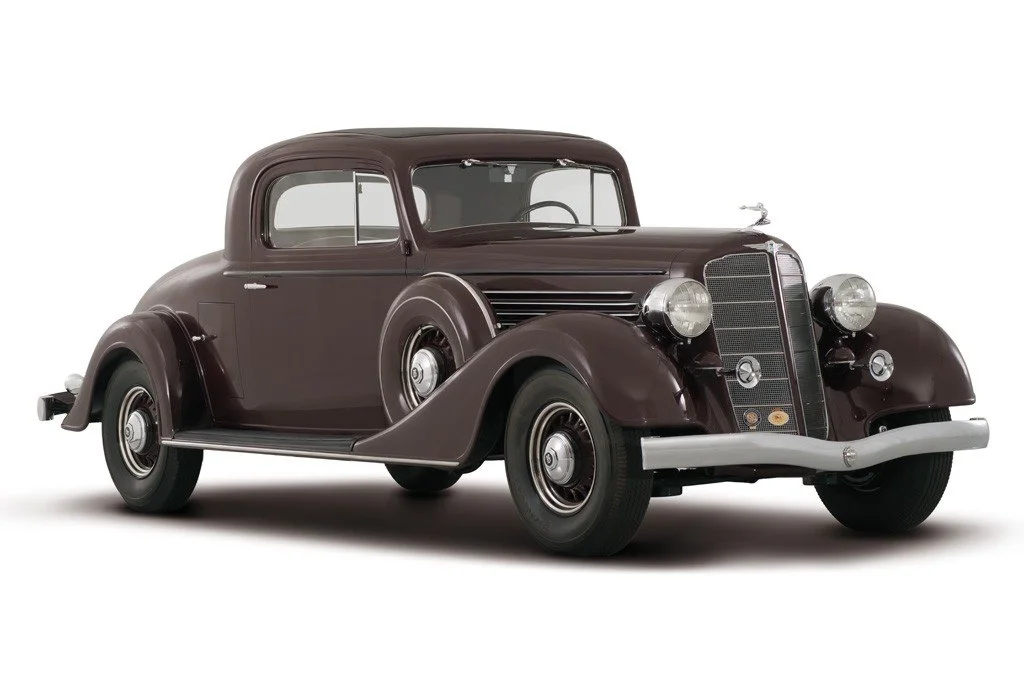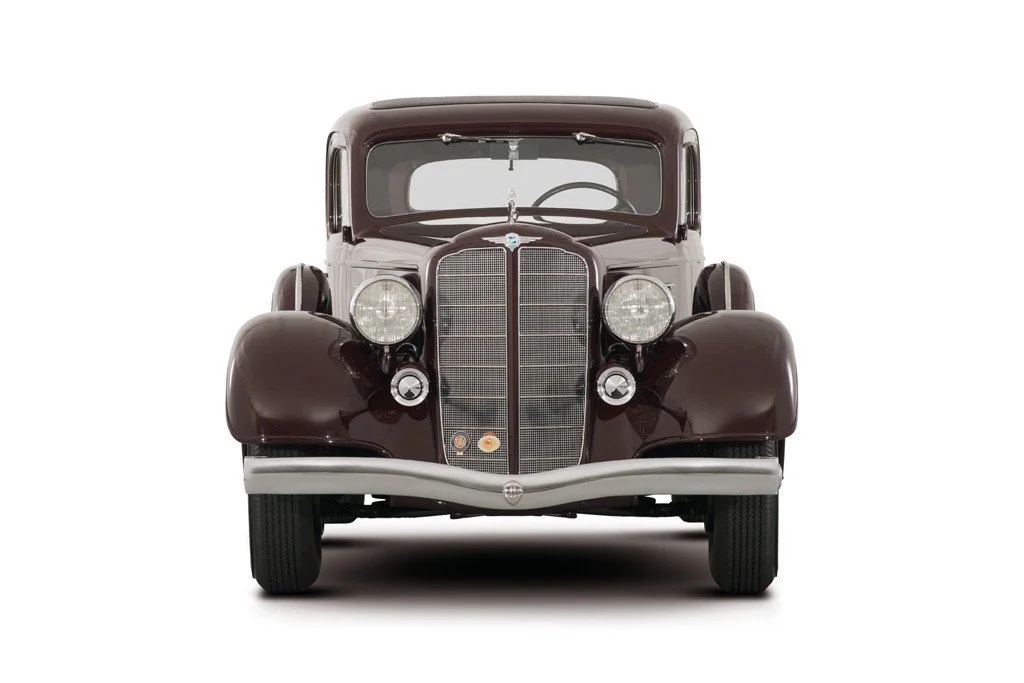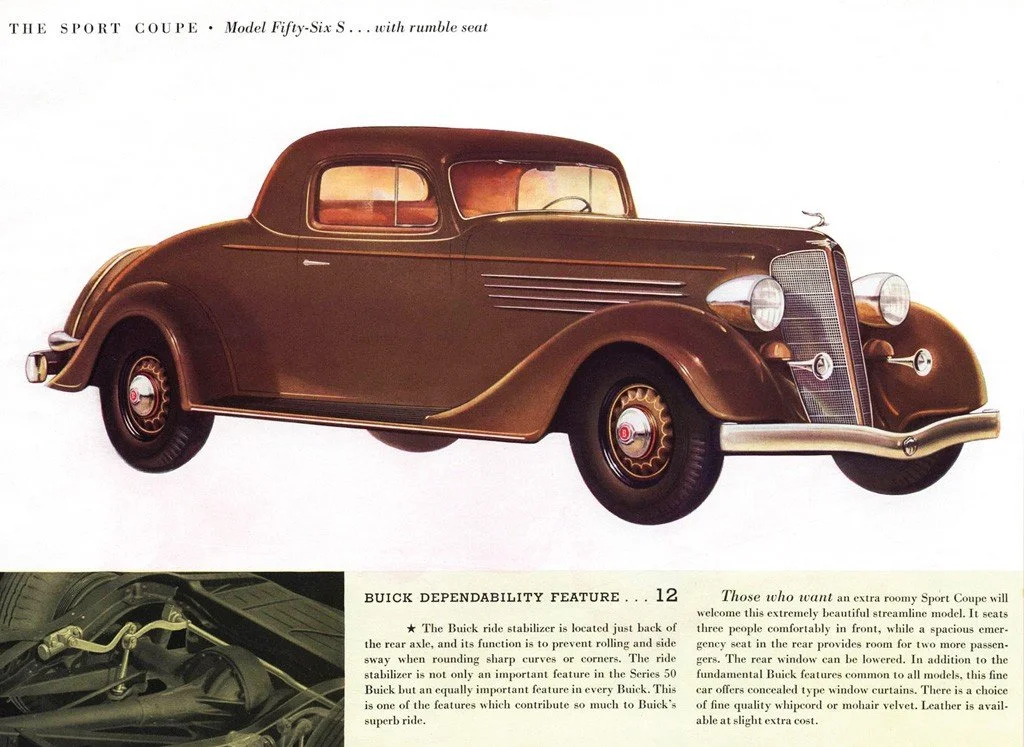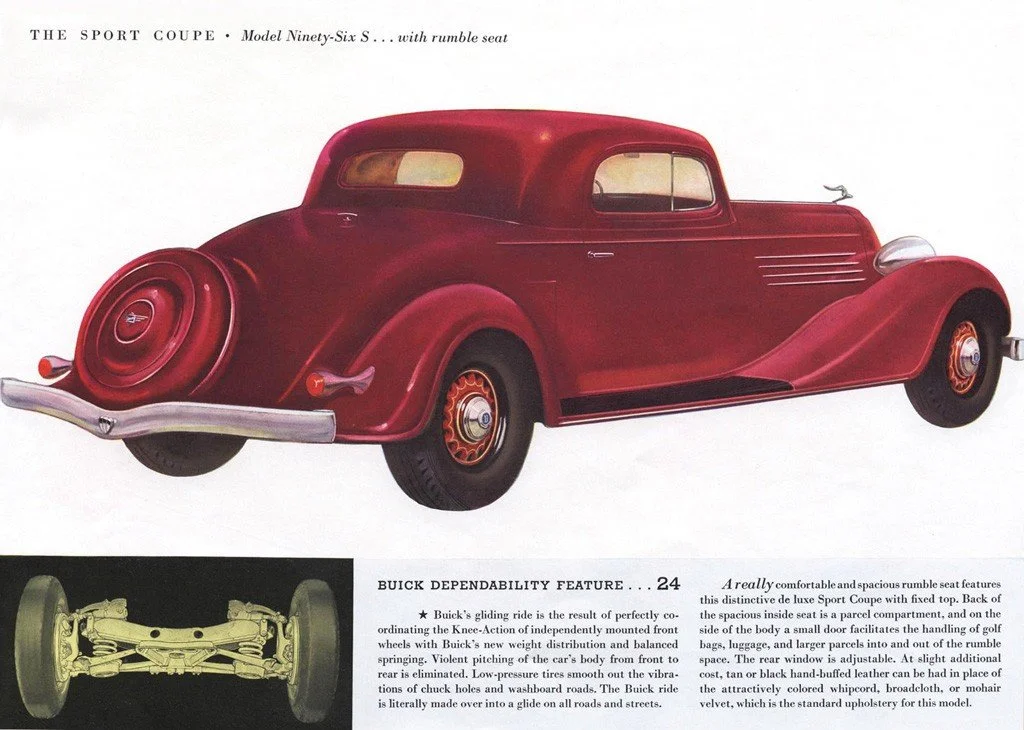-
Only 41 Buick Limited 96S Sport Coupes were produced for the US market in 1935, and only one was built for export. Today, only one such model is believed to have survived.
This coupe was bought in 1999 by the Nicola Bulgari Car Collection as an incomplete project needing a full restoration. The wood was rotten, the body dented and rusted, and all mechanicals were in need of attention. The goal was to have the car ready for the 100th anniversary of the marque, but when the featured brand at the Pebble Beach Concours d’Elegance in 2003 was discovered to be Buick, the 96S had to be restored with that as a goal.
The crew at Precision Motor Cars set to work completely dismantling the car and every detail was taken care of. A complete chassis and running gear were purchased from another Limited to get the missing parts. Thousands of hours went into every aspect of the car, racing against the clock. Some unforeseen delays were due to a dock-workers strike that held up many components for weeks. One month before the show, the paintwork had been finally completed, and the enormous work of putting the car back together began. The crew spent the last three weeks before the show sleeping and eating in the garage, until the transport truck picked up the car. When the Buick arrived at Pebble Beach, a crew of five persons put the last details together working under a tent the whole night. The car was started for the first time August 17 at 8 in the morning, just minutes before entering the show field. The judges were soon examining the car, and when the time came for the awards to be handed out, the Buick was called to the podium to be honored. A second place finish for the 96S was happily accepted by an exhausted crew of restoration professionals and Mr. Bulgari. -
Company
General MotorsWheelbase
136inInterior trim
Beige clothBrakes
front and rear drumsMake
BuickLength
212.5inEngine
inline 8 - 344,8cidTires
7.50x16Model
Sport Coupe - Model 96SWidth
78inCarburetor
1 Marvel ED 3SOriginal Price
$1,875Body style
2-door coupeWeight
4516lbsHorsepower
116hp @ 3200rpmProduction
42Model year
1935Exterior paint
Vermillion RedTransmission
Synchro-shift 3-speed manual -
The Wall Street crash that occurred in October 1929 greatly affected the automotive industry. From 1929 to 1932, sales of new automobiles fell by 75 percent, and automobile companies had a combined loss of $191 million in 1932 ($2.9 billion in today’s money), or 25 percent of industry sales. This compared with profits of $413 million in 1929, or 14 percent of industry sales. The highly profitable luxury end of the market virtually disappeared. The lower-priced segment grew from 40 percent of sales in 1929 to 80 percent of sales in 1933 and remained at 60 percent through the upturn and beyond. As a result, half the automakers closed down.
The Big Three had different approaches to the crisis. General Motors and Chrysler were able to survive the depression rather unscathed, while Ford took a severe blow. What differentiated GM and Chrysler from their competition was their superior understanding of how to adjust to the new realities presented by the Great Depression and their ability to look for advantage. In other words, they employed the strategic basics of both defense and offense. GM acted decisively to cut costs: some plants were closed, workers were laid off, production was cut in its middle-market and high-end brands. To reduce inventories, GM aggressively cut prices by as much as 70 percent on its most expensive cars, a move that would have been unthinkable under any other circumstances. By lowering the inventories purchased from outside suppliers, GM was able to keep fixed costs low and transfer risks to the suppliers, scaling down production quickly when demand collapsed. The company used the same engines and parts across different brands to further reduce inventories and create flexible capacity. And it merged its sales forces across middle-market brands to make the dealerships more effective. At the heart of GM’s success during the Great Depression was its decision to realign its product offering to fit the needs of a consumer base with less money to spend, creating “a car for every purse and purpose,” in Sloan’s words. GM expanded aggressively into the low-priced car market by shifting production from high-end brands to Chevrolet, its high-volume discount brand and cheapening the middle-market cars.
The Buick Company was in troubled waters by the mid-thirties. From third place in production with over 266,000 cars in 1926, the Company had sunk to eighth place with only 40,000 vehicles produced in 1933.
Harold Curtice, the new Buick general manager, was hard at work re-organizing the dealer network and improving production techniques. 1934 saw the introduction of the new Series 40, a Chevrolet body with a Buick character and such a low price that many customers flew to the showrooms, with almost double the production of previous year. The Great Depression was finally ending, and sales began to pick up, with over 78,000 cars sold. The 1935 models were a carbon copy of previous year’s offerings, and sales were modest once more. They improved greatly at the end of the year, when the radically restyled 1936 models were unveiled. For 1935, the lineup was renamed, with Special, Super, Century and Limited taking the place of the Series 40, 50, 60 and 90. The only mechanical modification was the adoption of the automatic choke, while in the exterior department, only the grille bars were slightly different, all else being the same.














